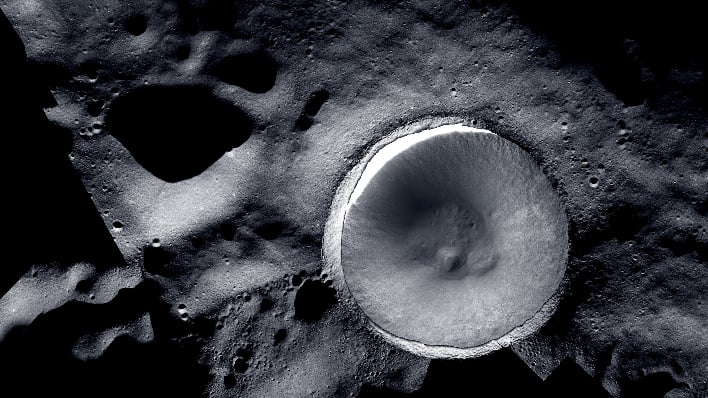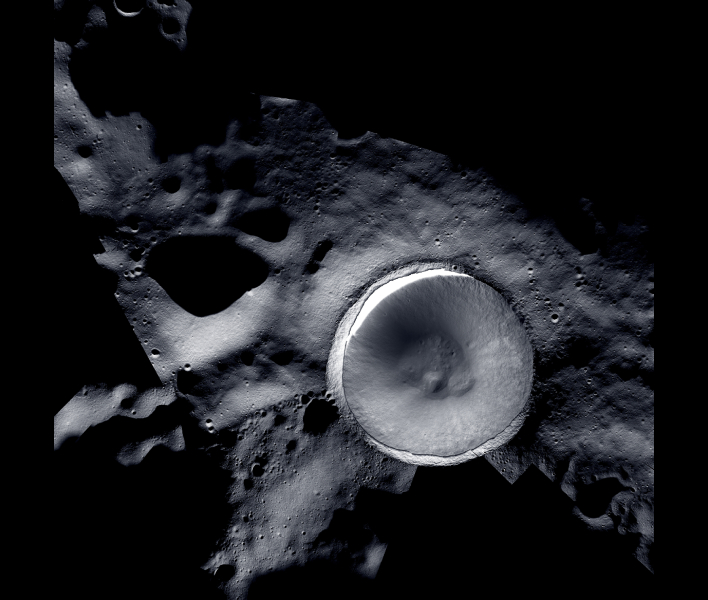Endless Darkness Of Moon's Lunar South Pole Comes Into View In Eerie NASA Photo

As NASA prepares to send humans back to the surface of the Moon with the Artemis III mission, the space agency's scientists and engineers are trying to learn as much about the darkened region that is believed to hold scientific discoveries that can aid in learning more about humanity's place in the universe and venturing even farther beyond. This was the main reason NASA placed its ShadowCam onboard the KPLO, also known as Danuri, which launched into orbit around the moon last year and made the recent mosaic possible.

Because ShadowCam is so sensitive to light, it is rendered useless in capturing images of parts of the Moon that are directly illuminated. Thus, the team at NASA had to use cameras onboard LROC, as well as data from ShadowCam, to create a comprehensive visual map of the terrain and geological features of both the brightest and darkest parts of the captured area of the Moon. The usually darkened interior floor and walls of Shackleton Crater are made visible thanks to ShadowCam. At the same time, the sunlit areas, such as the rim and flanks of the crater, were captured by imagery collected by LROC, according to NASA.
NASA wants a better view of the yet-to-be-explored lunar South Pole region as the Artemis III mission approaches. It is a high priority for the space agency because it is believed to contain ice deposits or other frozen volatiles. These ice deposits may have existed on the Moon for millions or billions of years, and being able to study them could provide further insight into how the Moon and the solar system evolved.

